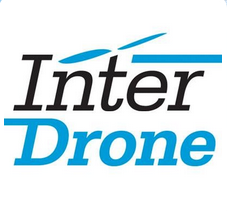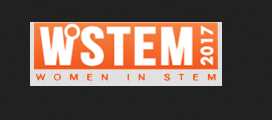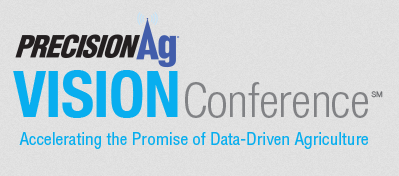PUBLISH YOUR EVENTS!
Boston Professional Events List
 Please wait...
Please wait...
How to write error free procedures and comply with GMP regulations
Date
Link to Website
Organizer
Location
Ticket Price: Seminar One Registration - $1,295.00
Why you should attend:
Procedures are very important for both execution and audits. These should be written for users without missing important information for regulators. Usually procedures have weaknesses that harm productivity, quality and regulatory standing. We will discuss from content development to formats designed for human error reduction due to procedures.
This cognition and human error webinar on FDA CGMP compliance will explain why it is important to understand human behavior and the psychology of error as well as to understand exactly where the instructions weaknesses are, so procedures can be human engineered, improved and/ or fixed.
Description of the topic:
Human error is known to be the major cause of quality and production losses in many industries. Although it is unlikely that human error will ever be totally eliminated, many human performance problems can be prevented. Human errors start at the design stage. Procedures play a vital role in human reliability. Nevertheless, it is really important to understand human behavior and the psychology of error as well as understand exactly where the instructions weaknesses are, so procedures can be human engineered, improved and/or fixed.
Areas Covered In the Seminar:
• SOP writing outline
• Content development
• The rational for procedure use
• Regulatory compliance background
• Universal purpose of procedures
• Background on Human Error Phenomena
• Importance of Human Error Prevention/reduction
• Training and human error
• Facts about human error
• Human Error as the Root Cause
• What is Human Error?
• How is Human Error controlled?
• Common mistakes: Memory failures, Overconfidence, We believe we are above average, Visual Detection, Vigilance Effectiveness.
• Types of error
• Human error rates and measurement
• Trending and tracking
• Prediction
• CAPA effectiveness
Learning Objectives
• The Human perspective
• Human Error as a root cause
• The thinking and reading process
• Common mistakes and causes
• How to create and maintain a procedure
• Goals of a procedure
• Good Procedure Writing practices (Terminology, Formats, layouts, mixed cases, steps content, common words, references, branching, conditional steps, the use of “Precautions”, “Warnings” and “Cautions”,
• Procedure styles
• Use of electronic information networks for procedure access
Who will benefit
• QA/QC directors and managers
• Process improvement/excellence professionals
• Training directors and managers
• Plant engineering
• Compliance officers
• Regulatory professionals
• Executive management
• Manufacturing operations directors
• Human factors professionals
Agenda
DAY 1
8:30 a.m. – 10:00 a.m. How to write error free procedures.
• Introduction.
• Human error basics.
• Background and best practices in other industries.
• Human error vision, error types and initial classification.
• Human error taxonomy, framework and methodology.
• Human error cause categories.
• Performance shaping factors associated to procedures.
10:00 a.m. – 10:15 a.m. Break
10:15 a.m. – 12:00 p.m. Procedures and regulations- The importance for human error prevention, training and other uses.
• The purpose of procedures and the importance for human error prevention.
• Regulatory compliance background and agencies’ expectations for procedures.
• Importance of procedures.
• Universal purpose of procedures: training, execution, and troubleshooting.
• The Human perspective and instructions writing: how do we understand written instructions?
• Procedures as a root cause: when, how and why do we categorize procedures as a root cause?
• Why resistance to procedures?
• Documentation hierarchy: from policies to record documents, documentation levels and level of detail.
12:00 p.m. – 1:00 p.m. Lunch
1:00 p.m. – 2:30 p.m. The human perspective
• The thinking and reading process.
• The human brain and errors of interpretation.
• Cognitive process and impact in manufacturing execution.
• Perception and understanding.
• Brain function and instructions development.
• Human thinking model: how we react to stimuli and process information.
• Rule based behavior and skill based behavior: impact on execution.
• Common mistakes and causes found in the industry.
2:30 p.m. – 4:30 p.m. How to create and maintain procedures.
• Facts about effective procedures.
• How to accomplish procedures main goal?
• Six step process:
o plan,
o investigate,
o organize,
o draft,
o draft revision,
o validation (field test),
o maintenance.
DAY 2
8:30 a.m. – 10:00 a.m. Human Engineering Procedures
• Discussion of insights from Day 1
• Writing rules and content development.
• Writing steps, sub-steps, and conditional statements.
• Page format: Font size, spacing, use of white space, title structure, control features, and other requirements.
Practice writing steps, sub-steps and conditional statements.
10:00 a.m. – 10:15 a.m. Break
10:15 a.m. – 12:00 p.m. Human Engineering Procedures (cont.)
• Procedure styles
• Format styles: when to use which?
• Making sure procedures are complete: what-if analysis and FMEA.
• Electronic vs. Paper based procedures: advantages and disadvantages.
• Validation and field testing steps.
• Procedure maintenance and change management.
• Document configuration and control system.
Practice: evaluate your procedure and suggest changes. Group discussion.
12:00 p.m. – 1:00 p.m. Lunch
1:00 p.m. – 2:30 p.m. Human error deviations related to procedures.
• Root cause analysis.
• Procedure related near root causes and root causes.
• CA-PA and procedures: be very careful.
• Process vs. procedure assessment.
• When to perform a process vs. procedure analysis and why it is so important to do so before establishing procedure revision as a CAPA for human error.
• How to avoid deviations related to procedures.
2:30 p.m. – 2:45 p.m. Break
2:45 p.m. – 3:45 p.m. Writing recommendations and final thought on metrics.
• High end and low end recommendations.
• KPI’s
• Human error rate
• 1st time pass rate
• Trending
• Tracking
3:45 p.m. – 4:00 p.m. Review and Key Insights Materials
Speaker Details
GINETTE COLLAZO, PH.D is a human error and human behavior expert. She has spent more than 15 years in technical training, organizational development and human reliability areas. She has worked with Bristol-Myers Squibb, Johnson & Johnson, Schering-Plough, Wyeth, and has been a consultant with major firms like Abbott, Johnson & Johnson, Perrigo, among many others. Also has implemented human error reduction programs and technology in many more small and mid-sized drug and device companies. An active researcher in specialized studies related to human reliability, she is the author of numerous publications on these topics.




